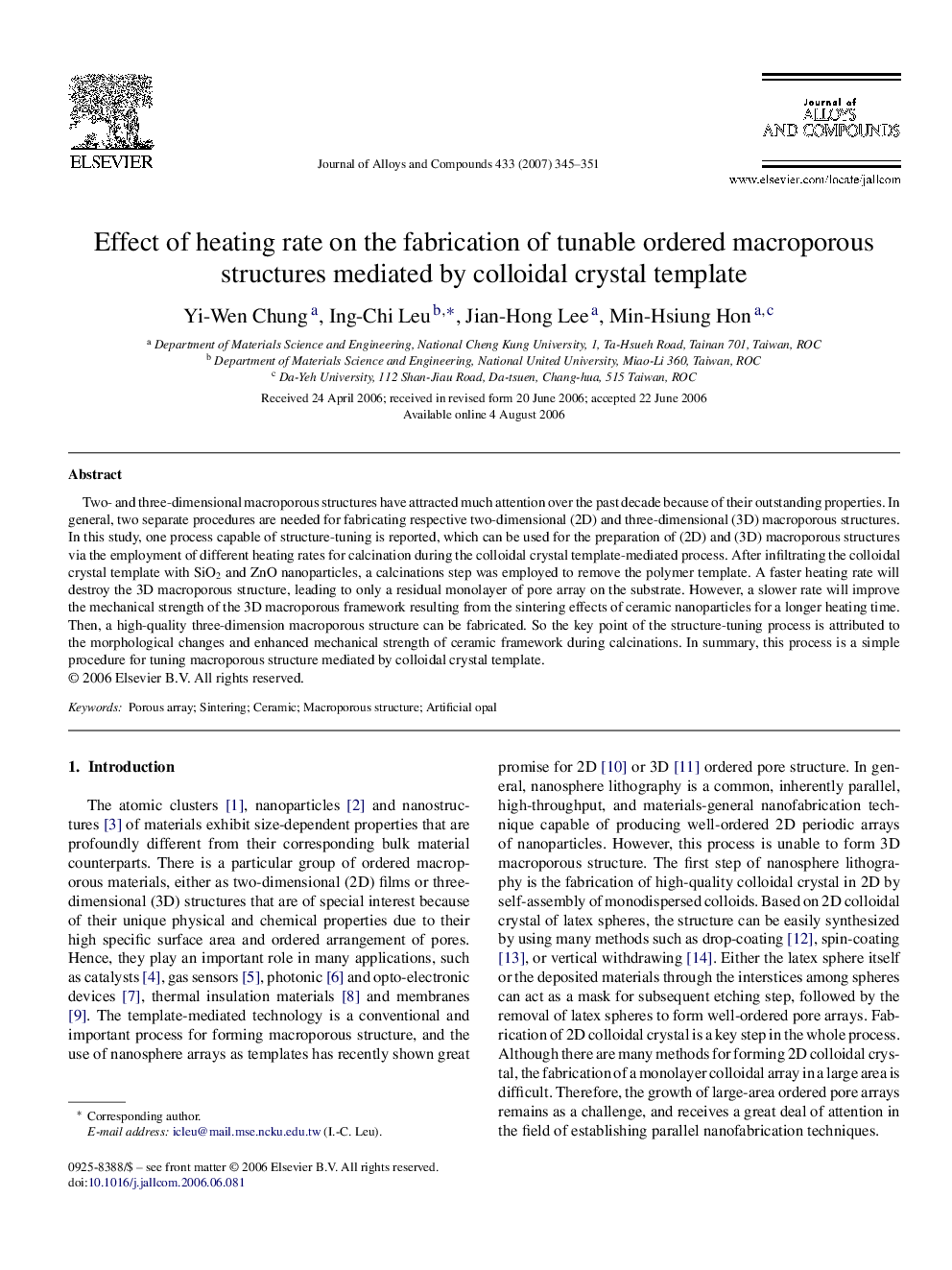| Article ID | Journal | Published Year | Pages | File Type |
|---|---|---|---|---|
| 1626129 | Journal of Alloys and Compounds | 2007 | 7 Pages |
Two- and three-dimensional macroporous structures have attracted much attention over the past decade because of their outstanding properties. In general, two separate procedures are needed for fabricating respective two-dimensional (2D) and three-dimensional (3D) macroporous structures. In this study, one process capable of structure-tuning is reported, which can be used for the preparation of (2D) and (3D) macroporous structures via the employment of different heating rates for calcination during the colloidal crystal template-mediated process. After infiltrating the colloidal crystal template with SiO2 and ZnO nanoparticles, a calcinations step was employed to remove the polymer template. A faster heating rate will destroy the 3D macroporous structure, leading to only a residual monolayer of pore array on the substrate. However, a slower rate will improve the mechanical strength of the 3D macroporous framework resulting from the sintering effects of ceramic nanoparticles for a longer heating time. Then, a high-quality three-dimension macroporous structure can be fabricated. So the key point of the structure-tuning process is attributed to the morphological changes and enhanced mechanical strength of ceramic framework during calcinations. In summary, this process is a simple procedure for tuning macroporous structure mediated by colloidal crystal template.
